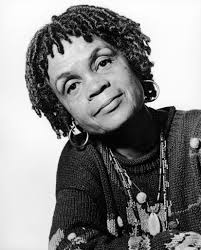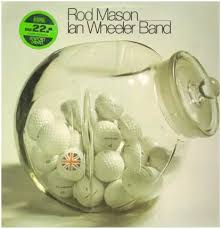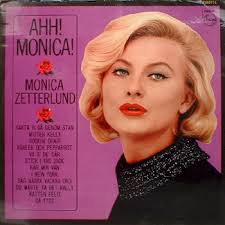
Daily Dose Of Jazz…
Pharoah Sanders was born Ferrell Lee Sanders on October 13, 1940 in Little Rock, Arkansas, an only child. He began his musical career accompanying church hymns on clarinet but his initial artistic accomplishments were in the visual arts. When he was at Scipio Jones High School in North Little Rock, he began playing the tenor saxophone.
After graduating from high school in 1959, Sanders moved to Oakland, California, where he lived with relatives. He briefly studied art and music at Oakland City College. He earned a Bachelor of Fine Arts from an unknown art institution.
He began his professional career playing tenor saxophone in Oakland, then moved to New York City in 1962. The following year he was playing with Billy Higgins and Don Cherry and caught the attention of Eric Dolphy and John Coltrane. In 1965, he became a member of Coltrane’s band, as the latter gravitated towards the avant-garde jazz of Albert Ayler, Sun Ra, and Cecil Taylor.
Sanders first recorded with Coltrane on Ascension, followed by their dual-tenor album Meditations, then joined Coltrane’s final quintet. Pharoah released his debut album as a leader, Pharoah’s First, was not what he expected. In 1966 he signed with Impulse! and the years Sanders spent with the label were both a commercial and critical success.
The 1970s had Sanders continuing to produce his own recordings including the 30-minute wave-on-wave of free jazz, The Creator Has A Master Plan from the album Karma, featuring vocalist Leon Thomas and to work with Alice Coltrane on her Journey in Satchidananda album. Although supported by African-American radio, Sanders’ brand of brave free jazz became less popular.
His major-label return came in 1995 when Verve Records released Message from Home, followed by Save Our Children (1998). But again, Sanders’s disgust with the recording business prompted him to leave the label. In the 2000s, a resurgence of interest in jazz kept Sanders playing festivals and was awarded a NEA Jazz Masters Fellowship for 2016 and was honored at a tribute concert in Washington DC on April 4, 2016.
In 2020 he recorded the album Promises, with the English electronic music producer Floating Points and the London Symphony Orchestra. It was widely acclaimed as a clear late-career masterpiece.
Saxophonist Pharoah Sanders, known for his overblowing, harmonic, and multiphonic techniques, died on September 24, 2022 at his home in Los Angeles at the age of 81.
More Posts: bandleader,history,instrumental,jazz,music,saxophone

Jazz Poems
FOR OUR LADY
yehbillie if someone
had loved u like u
shud have been loved
ain’t no tellen what
kind of songs
u wud have swung
gainst this country’s wite mind
or what kind of lyrics
wud have pushed us from
our blue / nites
yeh billie
if some blk / man
had reallee
made u feel
permanentlee warm
ain’t no tellen
where the jazz of yo/songs
wud have led us.
SONIA SANCHEZ
from Jazz Poems ~ Selected and Edited by Kevin Young
More Posts: book,classic,collectible,history,jazz,library,poet

Daily Dose Of Jazz…
Rod Mason was born September 28, 1940 in Plymouth, England and as a young man played with the local Tamar Valley Jazz Band, in which his father, Frank “Pop” Mason, had played drums. At Kelly College, in Tavistock, England he played the bugle with the cadet corps, then the valve trombone. He played this in his father’s band until the trumpet player left, whereupon he replaced him using a brass-band style cornet.
He went on to play briefly with the Cy Laurie band from 1959 to 1960 and two years later went with Monty Sunshine who left the Chris Barber band to form his own group. Sunshine hired Mason on the recommendation of Kenny Ball. In the mid-1960s after leaving Sunshine, Rod worked in the family business and played occasionally, until a winning appearance on Hughie Green’s Opportunity Knocks TV talent show which led to a flood of offers.
A facial paralysis forced him to use other mouthpieces, which allowed him to extend the range of his instrument. In 1965, he established his own band. From 1970 he played in the Acker Bilk Paramount Jazz Band, before he founded a band together with Ian Wheeler in 1973. He recorded numerous recordings for the Reef label. The 1980s saw Mason playing in the Dutch Swing College Band. In 1985, he founded the Hot Five band and released a number of albums for Timeless Records and regularly toured Europe.
Trumpeter, cornetist, vocalist Rod Mason who recorded thirty-two albums as a leader, played his last gig in Kaarst, Germany in December 2016 and died three weeks later on January 8, 2017 after developing peritonitis and pneumonia.
More Posts: bandleader,cornet,history,instrumental,jazz,music,trumpet,vocals

Daily Dose Of Jazz…
Guido Basso was born on September 27, 1937 in Montreal, Quebec, Canada. He grew up in the Little Italy neighbourhood of Montreal, in an Italian-Canadian family. He began playing the trumpet at the age of nine and studied at the Conservatoire de musique du Québec à Montréal.
His professional music career started in his teens, under the name Stubby Basso. During his early twenties he performed regularly at the El Morocco in Montreal, and played in bands led by Maury Kaye. Singer Vic Damone discovered Basso playing at El Morocco, then included him on a tour from 1957 to 1958.
He had a professional career as a composer, conductor, arranger, trumpeter, flugelhornist, and harmonica player. In 1958, Guido joined singer Pearl Bailey and her husband, drummer Louis Bellson, touring North America with them and their orchestra. Returning to Canada Guido settled in Toronto, Canada in 1961, during that time he studied at The Royal Conservatory of Music.
In 1963, he became music director for CBLT’s Nightcap, a tv station job he held for four years, then on to music director for the Canadian Broadcasting Corporation. He organized and led big band concerts featuring Dizzy Gillespie, Quincy Jones, Woody Herman, Benny Goodman, Count Basie and Duke Ellington. Basso was a charter member of Rob McConnell’s Boss Brass, playing with the band for over twenty years and also played in big bands led by Ron Collier, and Phil Nimmons.
Trumpeter, flugelhornist, arranger, composer, and conductor Guido Basso, who won two Juno awards, was a member of the Order of Canada, died in Toronto, Canada on February 13, 2023, at age 85.
More Posts: bandleader,history,instrumental,jazz,music

Daily Dose Of Jazz…
Monica Zetterlund was born Eva Monica Nilsson on September 20, 1937 in Hagfors, Sweden. She began by learning the classic jazz songs from radio and records, initially not knowing the language and what they sang about in English. Her hit songs included Swedish covers of Walking My Baby Back Home. Little Green Apples, Waltz for Debby, Hit the Road Jack, and Moon Over Bourbon Street, among many others.
She also interpreted the works of Swedish singer-songwriters Evert Taube, Olle Adolphson and Povel Ramel, as well as international jazz musicians/songwriters. She worked with Louis Armstrong, Bill Evans, Stan Getz, Steve Kuhn and Quincy Jones, and in the Scandinavian jazz world with people like Georg Riedel, Egil Johansen, Arne Domnérus, Svend Asmussen and Jan Johansson.
In 1964, she recorded the jazz album Waltz for Debby, featuring Bill Evans, and was the most proud of. Her professional skill was amply demonstrated in her performance of the challenging Harold Arlen song, So Long, Big Time. Her rendition of Once Upon A Time In Stockholm, though not suitable for the 1963 Eurovision Song Contest, remained successful in Sweden.
She suffered from severe scoliosis which began after a childhood accident, and as a result was forced to retire from performing in 1999. On May 12, 2005, vocalist Monica Zetterland, as awarded the Illis quorum by the government of Sweden, died probably due to her habit of smoking in bed following an accidental fire in her apartment in Stockholm, Sweden at age 67.
More Posts: bandleader,history,instrumental,jazz,music,vocal



